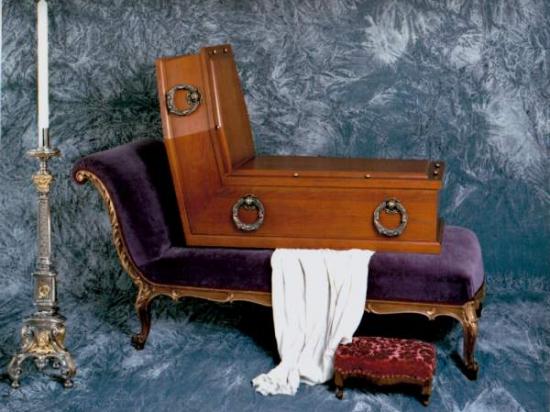Central Cemetary
Simmeringer Hauptstraße 230–244
1110 Vienna
Viennese, with their formidable humor, like to say ‘half the size of Zurich, but twice as much fun’. The dead population nearly doubles the present one. The name is more descriptive of its significance than its location, as it is situated on the very outskirts, in the city district Simmering.
The decision of establishing such a huge cemetery was amongst other things based on a calculation that the capital of large Austro-Hungarian-Empire would grow to have four million inhabitants by the end of the 20th century. What a tragic coincidence that the Empire was buried itself - collapsing 1918. But anyhow, the Viennese still put it to good use.
The Central Cemetery was designed by Karl Jonas Mylius and Alfred Friedrich Bluntschli in 1870 and opened on All Saint’s Day in November 1874. Jacob Zelzer was the first one to be buried. You can still find his grave near the administration building at the cemetery wall. Nowadays, there are up to 20-25 burials a day.
The church right in the centre of the cemetery is named Karl-Borromäus-Kirche, but it is also known as Dr.-Karl-Lueger-Gedächtniskirche (Karl Lueger Memorial Church).







As the cemetery was so unpopular due to the distance from the city center, the authorities decided to use honorary graves as kind of a tourist attraction. Since Vienna is a city of music, the municipality liked to express its gratitude to composers by granting them monumental tombs. You will find notables as Schubert and Beethoven, who were moved there in 1888, as well as Brahms, Salieri and Johann Strauss II. Mozart is actually buried in nearby St. Marx Cemetery, but you will find a cenotaph erected in honor of him.
Kurt Hauenstein aka Supermax (1949-2011), who wrote the hymn ‘Lovemachine’ for the red light milieu and gay clubs, also rests at Zentralfriedhof - as well as the beloved Federal Minister, Vice-Mayor, City Counsil and chairperson of SoHO (Social democracy and homosexuality), Gertrude Fröhlich-Sandner (1926-2008).
Next to the Catholic section, there is also a Protestant Cemetery (opened 1904) and two Jewish cemeteries. Even though the Nazis destroyed the elder one (est. 1863) during the Kristallnacht, 60.000 graves still remain intact. Prominent burials include author Arthur Schnitzler or those of the Rothschild family. Muslims are buried at Zentralfriedhof since 1876, but the dead are buried according to Austrian law in a coffin, not in a shroud, as it is Islamic ritual practice. There are also burial grounds for the use of various Orthodox churches.
Europe’s first Buddhist cemetery was established in Central Cemetery in May 2005. Since 2000, there is a Baby burial ground close to Tor 3.
Private car traffic is allowed due to the vast size of the cemetery, although a toll has to be paid. There is also a public “cemetery bus” line (no. 106) available, with several stops inside the cemetery grounds.
A quite popular euphemism for a death is that the deceased person”has taken the 71”. Its origin by the most popular way of public transport to the cemetery - tramway 71, running from Schwarzenbergplatz.
Viennese love their Zentralfriedhof and use the wonderful area also for solely recreational reasons - for example relaxing in the park of peace and strength. Wolfgang Ambros, a famous Austrian musician, honored the 100th anniversary of the cemetery’s opening in 1975 with his song “Es lebe der Zentralfriedhof” (‘Long live the Central Cemetery’).
A detailed map of the Central Cemetery and its Grave of Honor can be bought from the cemetery guard at Gate 2. Audio-Picture-Guides are available at Gate 2 (lending fee: € 7.00)








